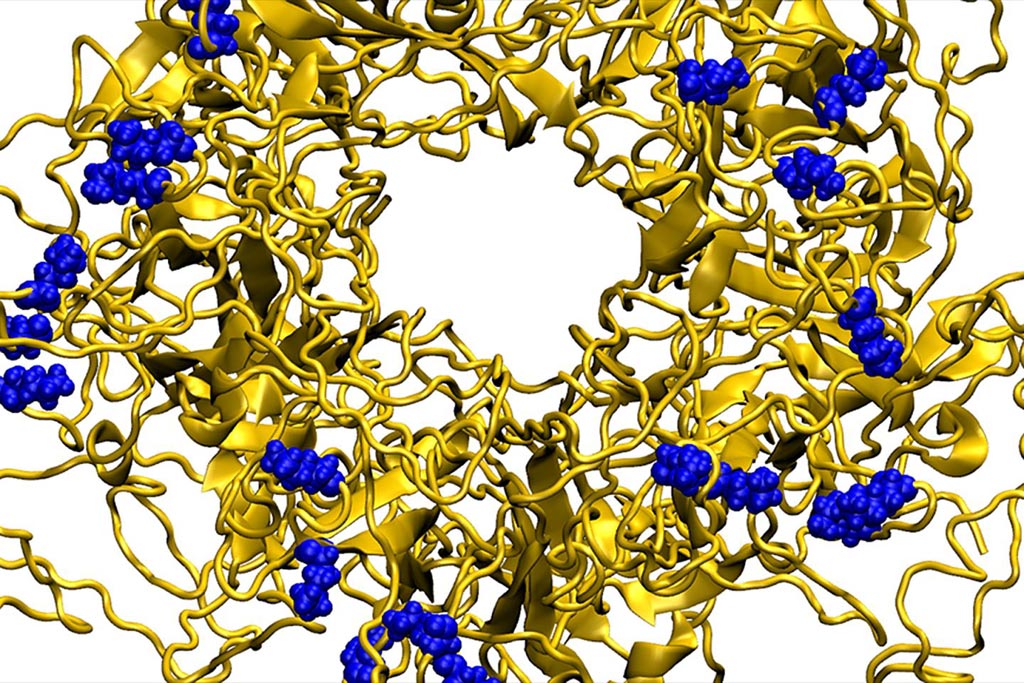Novel Nanoparticles May Lead to Universal Antiviral Drug
By LabMedica International staff writers
Posted on 02 Jan 2018
A team of molecular virologists has developed a nanoparticle-based broad-spectrum antiviral agent that binds irreversibly to a large range of viruses and causes lethal structural deformations without affecting healthy tissue.Posted on 02 Jan 2018
Available antiviral drugs are virus-specific and active against a limited panel of human pathogens. There are broad-spectrum substances that prevent the first step of virus–cell interaction by mimicking heparan sulfate proteoglycans (HSPG), the highly conserved target of viral attachment ligands (VALs). However, the reversible binding mechanism prevents their use as a drug, because, upon dilution, the inhibition is lost. Known VALs are made of closely packed repeating units, but the aforementioned substances are able to bind only a few of them.

Image: A molecular dynamics model showing a nanoparticle binding to the outer envelope of the human papillomavirus (Photo courtesy of Dr. Petr Kral, Ecole Polytechnique Fédérale de Lausanne).
To avoid the reversible binding problem, investigators at Ecole Polytechnique Fédérale de Lausanne (Switzerland) designed antiviral nanoparticles with long and flexible linkers that mimicked HSPG. These novel nanoparticles simulated the VAL repeating units and enabled strong and multivalent viral association that eventually led to irreversible viral deformation.
The investigators reported in the December 18, 2017, online edition of the journal Nature Materials that the efficacy of this proposed mechanism was supported by virucidal assays, electron microscopy images, and molecular dynamics simulations. The particles showed no cytotoxicity, and in vitro irreversibly blocked the activity of herpes simplex virus (HSV), human papilloma virus, respiratory syncytial virus (RSV), dengue, and Lentivirus. In addition the particles were active in vitro in human cervicovaginal histocultures infected by HSV-2 and in vivo in mice infected with RSV.
Related Links:
Ecole Polytechnique Fédérale de Lausanne














